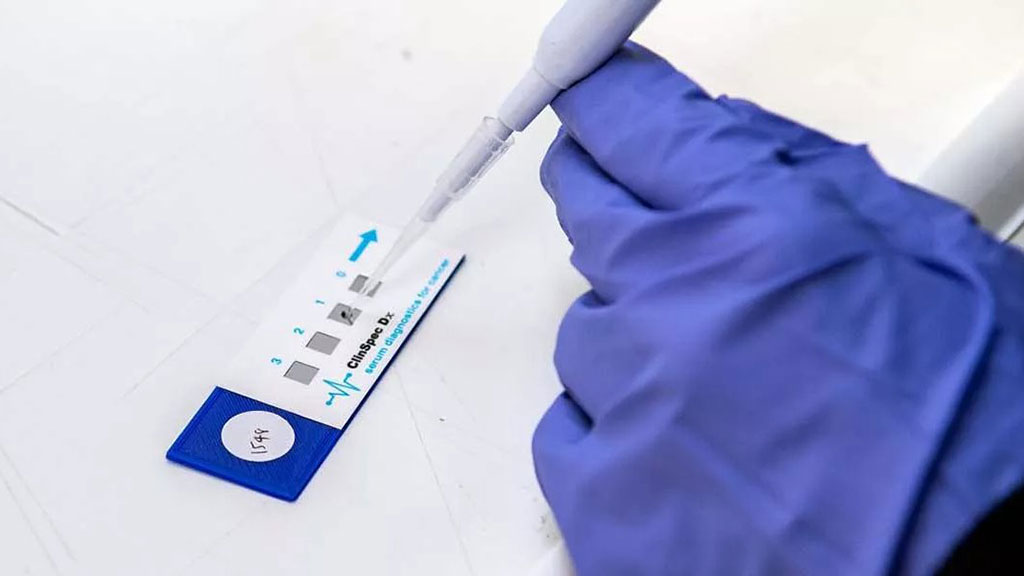A Novel Liquid Biopsy Spectroscopy Method for Early Detection of Brain Tumors
By LabMedica International staff writers
Posted on 16 Aug 2021
A blood-based liquid biopsy approach enables detection of brain tumors that are so small and low-grade that the patient will often have few or no symptoms.Posted on 16 Aug 2021
Due to the non-specific symptoms of brain cancer, gliomas will often remain undetected until they are larger or at a higher grade, reducing the patient’s likelihood of a good clinical outcome. Earlier detection and diagnosis of brain tumors is vital to improve patient outcomes, leading to safer surgeries and earlier treatments.

Image: Highly effective early diagnostic tests could revolutionize cancer detection. Here, a sample is dropped onto a disposable Dxcover Slide and dried for analysis (Photo courtesy of Dxcover Limited)
In this regard, investigators at the University of Strathclyde (Glasgow, United Kingdom) and the biotech company Dxcover Limited (Glasgow, United Kingdom) developed a Multi Cancer Early Detection (MCED) Platform based on a spectroscopic liquid biopsy approach for detection of small and low-grade gliomas.
This approach combined attenuated total reflection (ATR)-Fourier transform infrared (FTIR) spectroscopy coupled with supervised learning methods and machine learning algorithms for the analysis of dried blood samples.
The current study was carried out on a cohort of 177 patients (90 patients with high-grade glioma (glioblastoma (GBM) or anaplastic astrocytoma), or low-grade glioma (astrocytoma, oligoastrocytoma, and oligodendroglioma). Tumor volumes were calculated from magnetic resonance imaging (MRI) investigations and patients were split into two groups depending on MRI parameters. Combining the spectroscopy technology with supervised learning methods and machine learning algorithms, 90 tumor patients were stratified against 87 control patients who displayed no symptomatic indications of cancer, and were classified as either glioma or non-glioma.
Results revealed that sensitivities, specificities, and balanced accuracies were all greater than 88%, the area under the curve (AUC) was 0.98, and cancer patients with tumor volumes as small as 0.2 cubic centimeters were correctly identified.
Senior author Dr. Matthew Baker, chief technical officer of Dxcover Limited, said, "This breakthrough is a watershed moment in the development of early cancer detection. The study demonstrates the effectiveness of our Dxcover Brain Cancer Liquid Biopsy at detecting even the smallest brain tumors, which is great news for the care of future brain cancer patients, increasing treatment options and potentially extending life expectancy. Clinical tests like this are a crucial part of Dxcover's journey to develop and commercialize a widely accepted Multi-Cancer Early Detection platform to help save lives."
The liquid biopsy for early glioma detection was described in the July 30, 2021, online edition of the journal Cancers.
Related Links:
University of Strathclyde
Dxcover Limited













